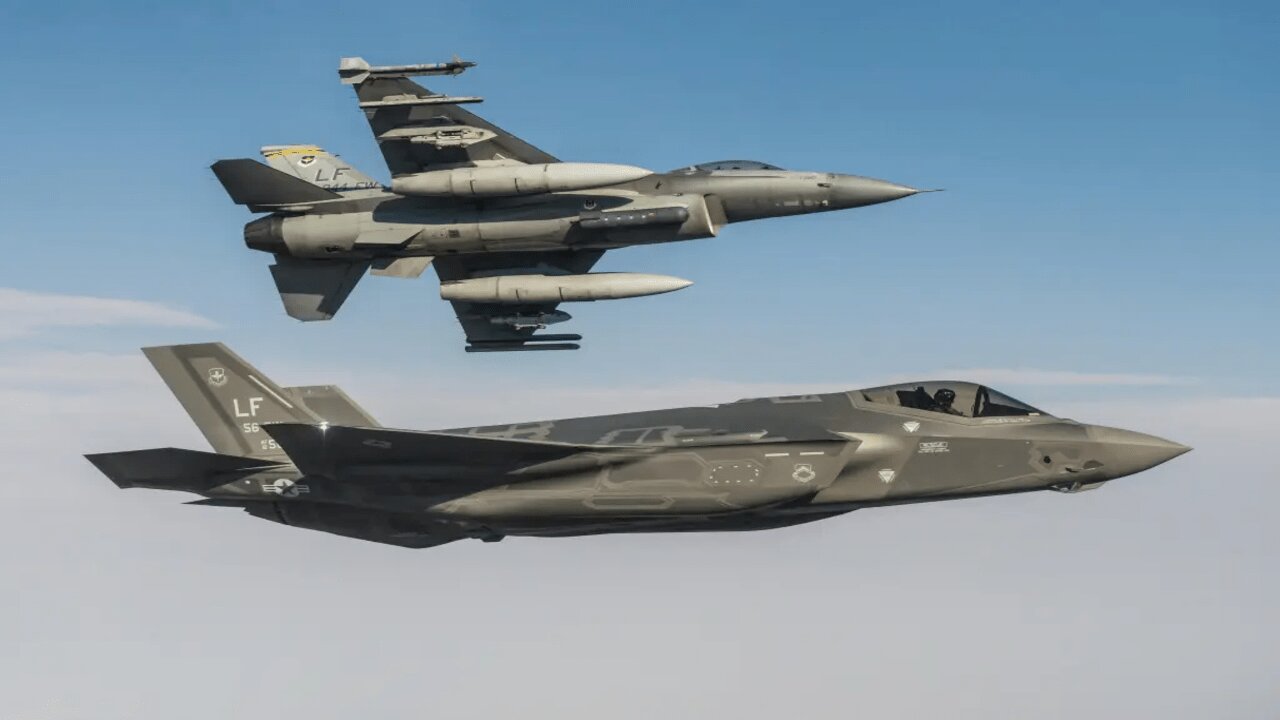Premium Only Content

US intercepts eight Russian fighter jets near Alaska
WASHINGTON — As anxieties grow over US airspace security in recent weeks, the military intercepted eight Russian fighter jets near Alaska in two separate incidents this week, the North American Aerospace Defense Command said Thursday.
The first group of four Russian aircraft — which included a Tupolev TU-95 BEAR-H strategic bomber and SU-30 and SU-35 fighter jets — approached the Alaska Air Defense Identification Zone (ADIZ) on Monday, followed by a second quartet a day later, NORAD said in a statement.
In each case, NORAD sent two F-35A fighter jets to intercept the Russian flights, supported by two F-16 fighters, an E-3 Sentry early-warning aircraft and two KC-135 Stratotankers.
“NORAD tracks and positively identifies foreign military aircraft that enter the ADIZ,” the command said. “NORAD routinely monitors foreign aircraft movements and as necessary, escorts them from the ADIZ.”
he US military intercepted eight Russian fighter jets near Alaska over the past week.
Bloomberg via Getty Images
The Russian aircraft “remained in international airspace and did not enter American or Canadian sovereign airspace,” NORAD added.
“This Russian activity near the North American ADIZ occurs regularly and is not seen as a threat, nor is the activity seen as provocative,” the military command went on. “NORAD had anticipated this Russian activity and, as a result of our planning, was prepared to intercept it.”
While NORAD said such instances are not uncommon, the back-to-back nature of the Russian intrusions is notable.
NORAD claims the Russian aircraft “remained in international airspace and didn’t enter American or Canadian sovereign airspace.”
Matthew Short/U.S. Air Force
“Since Russia resumed out of area Long Range Aviation activity in 2007, NORAD has seen a yearly average of approximately six to seven intercepts of Russian military aircraft in the ADIZ,” NORAD said. “These numbers have varied each year from as high as 15 to as low as zero.”
National security threats from the air have been of particular interest since NORAD first detected a Chinese spy balloon entering US airspace over Alaska on Jan. 28. The surveillance device spent the next week traversing the continental US before President Biden ordered it shot down on Feb. 4 off the coast of South Carolina.
After that incident, NORAD adjusted its radars to better track airborne objects at high altitudes, leading to the identification and shoot-downs of three successive UFOs over the US and Canada this past weekend.
While NORAD has led the recent balloon and UFO identification efforts, the military command “assesses that this Russian flight activity is in no way related to recent NORAD and US Northern Command operations associated with airborne objects over North America during the last two weeks
-
 4:10
4:10
DiggTrueInfor17
1 year agoThe c40 plan for Smart cities
416 -
 14:47
14:47
Tactical Considerations
14 hours ago $0.23 earnedClassic Precision Woox Furiosa Bergara Premier 6.5 CREED
9.88K -
 40:44
40:44
Rethinking the Dollar
22 hours agoDonald & Elon Head to Fort Knox—What Are They Planning?
7.67K14 -
 1:10:15
1:10:15
MTNTOUGH Fitness Lab
23 hours ago"My Baseball Career Wasn't Enough": Adam LaRoche's Life-Changing Anti-Trafficking M
6.48K2 -
 1:00:12
1:00:12
The Tom Renz Show
18 hours agoComing to America & Coming to Christ
27.4K7 -
 1:12:21
1:12:21
TheRyanMcMillanShow
23 hours ago $0.04 earnedDebbie Lee: Mother of First Navy Seal Killed In Iraq, Marc Lee - RMS 019
10K1 -
 38:05
38:05
Uncommon Sense In Current Times
16 hours ago $0.05 earnedIs Israel Being Forced Into a Bad Deal? David Rubin Exposes the Truth | Uncommon Sense
9.49K8 -

FreshandFit
10 hours agoAfter Hours w/ Girls
118K93 -
 2:33:58
2:33:58
TimcastIRL
13 hours agoDan Bongino ACCEPTS Deputy FBI Director, SECRET NSA CHATS EXPOSED w/Joey Mannarino | Timcast IRL
185K102 -
 1:09:33
1:09:33
Glenn Greenwald
17 hours agoMichael Tracey Reports from CPAC: Exclusive Interviews with Liz Truss, Steve Bannon & More | SYSTEM UPDATE #412
135K95